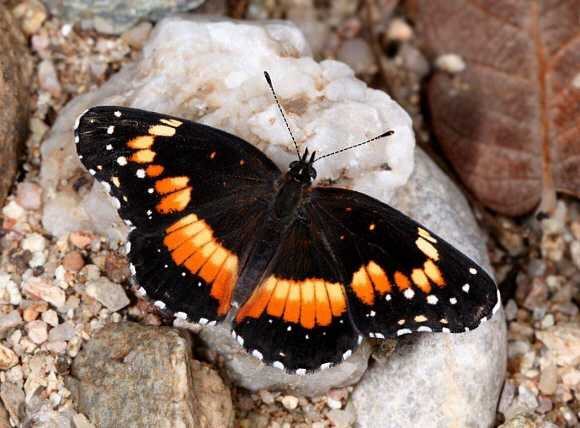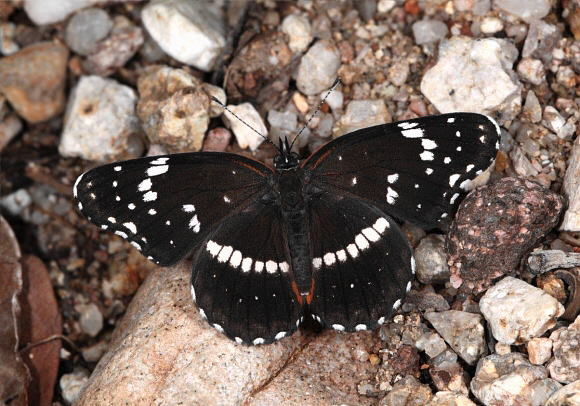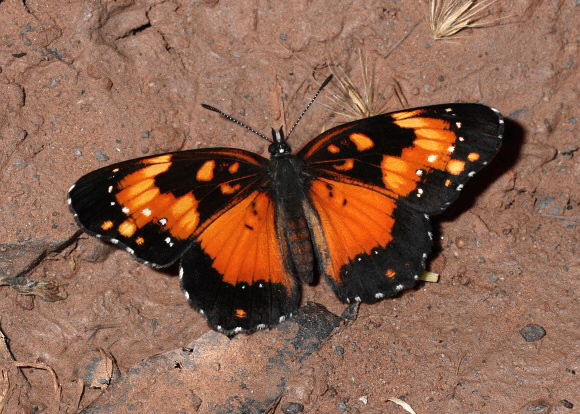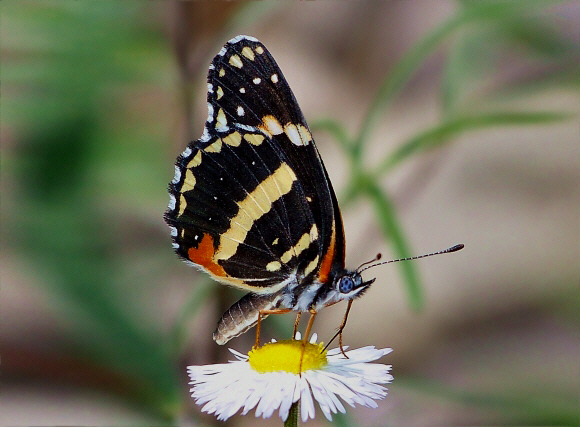
Introduction
The tribe Melitaeini is of worldwide distribution. It includes the Crescents and Checkerspots of North America, and also many familiar European species such as the Marsh, Spotted and Heath Fritillaries.
There are 33 Chlosyne species of which 29 occur in North America and/or Mexico, while the rest are found variously from Guatemala to Argentina. Many Chlosyne species are characterised by having a patchwork of black, yellow and red/orange markings; while others are fritillary-like in appearance, with a network or dark veins and lines on an orange-brown ground colour.
Chlosyne lacinia is the most widespread and abundant member of the genus, being found from the southern states of the USA to Bolivia and Argentina. There are 4 subspecies, each differing greatly from the others in appearance.

Habitats
This species is found along roadsides, forest edges, cattle pastures and other open sunny disturbed habitats, at altitudes between 0-1400m.
Lifecycle
The eggs are bright orange-yellow. They are laid in untidy heaps of up to 3 layers deep beneath the underside of Helianthus leaves ( Asteraceae ). The caterpillars occur in several colour forms ranging from black to orange, and are covered with short spines. They are diurnal and feed gregariously in the early instars. In the USA they are a commercial pest of sunflowers. These plants contain toxins which are ingested by the larvae and passed on to the adult butterflies, rendering them noxious to birds. The pupae are straw coloured, compact in dimensions, and have a slightly waxy surface.

Adult behaviour
Males are usually seen either when nectaring at Asteraceae, or when imbibing mineralised moisture from patches of damp ground. Females when freshly emerged are so heavily laden with eggs that they are barely capable of flying.

